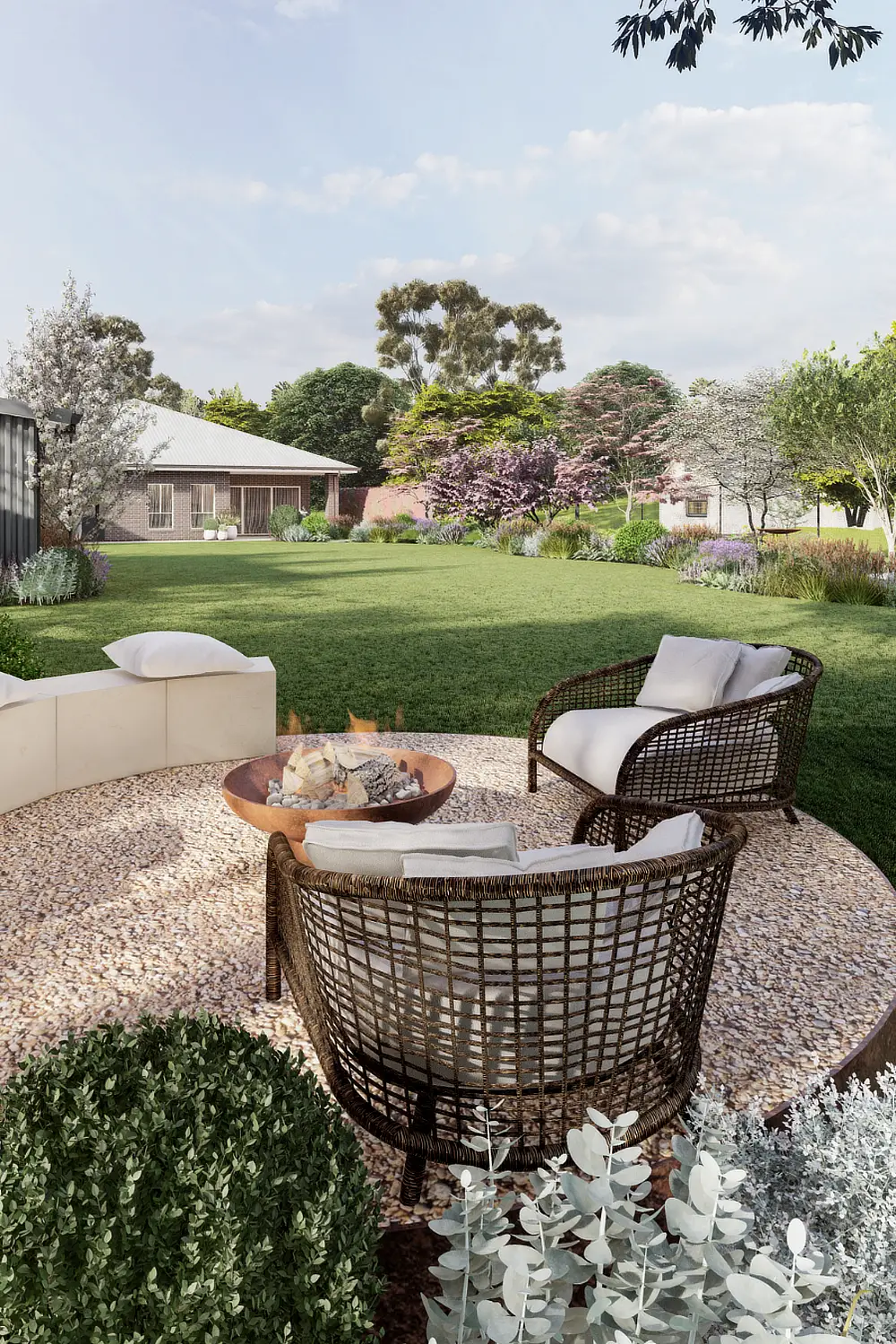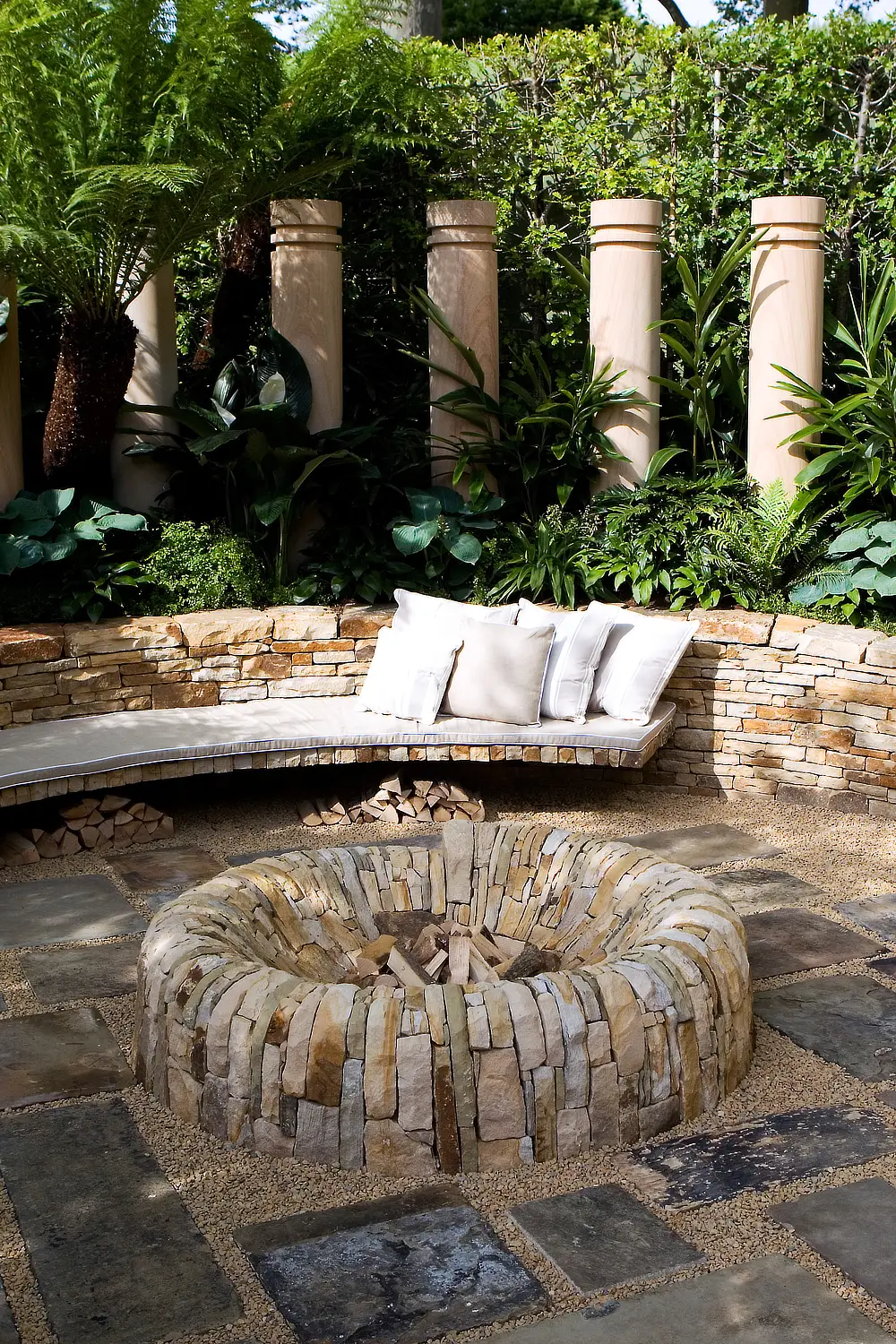Sydney’s lifestyle is built around outdoor living. From long summer nights to crisp winter evenings, gardens become places to gather, unwind, and connect. A well-considered fire pit design turns these spaces into year-round retreats. Beyond providing warmth, a fire pit creates focus, atmosphere, and connection. The difference lies in how it’s designed – proportion, placement, and material transform it from a simple feature into an architectural anchor within the landscape.
The Role of Fire Pit Design in Landscape Architecture
In exceptional gardens, every element has intent. A fire pit design that feels permanent and balanced enhances the experience of a space, while a poorly placed or undersized one can interrupt it. Fire pits are not only about heat; they are about people. They invite gathering, encourage conversation, and extend outdoor living into cooler months.
Placement is crucial. A fire pit positioned to capture views or align naturally with a terrace feels purposeful. When it’s placed without thought, it becomes forgotten. Proportion also matters. Too small, and it loses presence. Too large, and it dominates. The balance of these elements, along with the choice of materials, defines how the space feels and functions.
In landscape architecture, these considerations form part of the initial design process, not a later addition. Safety, council requirements, and site orientation are resolved early so the result feels integrated, elegant and safe year-round.
Materials That Shape the Character of a Fire Pit
The material palette around a fire pit determines whether it feels architectural or temporary. Corten steel, with its rich patina, works beautifully in native or coastal gardens, blending with stone and grasses. Formed concrete suits contemporary designs where clean lines and texture define the aesthetic. Natural stone, however, remains timeless. It grounds the space and links the fire pit back to the home’s architecture.
At a recent landscape design project in Vaucluse, we designed a custom fire pit surrounded by curved bench seating rendered in micro-cement to match the façade. This detail created continuity between house and garden. In our Rozelle garden, we placed a steel fire bowl within organic bluestone paving, which featured Zoysia tenuifolia planted between the joints. The mix of stone, steel, and soft planting made the setting relaxed and textural, so it perfectly aligned with the garden’s tropical character.
These details show how materials can elevate a fire pit beyond decoration, creating a permanent feature that feels resolved and intentional within the broader landscape.
For additional information on safe and sustainable fire pit construction and regulations, visit the NSW EPA safety guide.
Inspired Exteriors’ Approach to Fire Pit Design
At Inspired Exteriors, every fire pit design is developed as part of a cohesive landscape vision. It’s never a standalone object. We consider the full spatial relationship. How people move, sit, and view the fire pit from different points in the garden. Whether anchoring a terrace, adjoining a pool, or forming a quiet retreat, each is tailored to the site and the architecture.
Our process begins with proportion and placement, followed by material and planting integration. We collaborate with artisans and suppliers to source finishes that are both refined and durable in all climates. The outcome is a design that complements the home and enhances how the garden is used, day and night.
When approached through the lens of landscape architecture, a fire pit becomes more than a functional feature. It becomes a social focal point, a sculptural statement, and a timeless connection between people and place.
If you’re planning a new garden and want a bespoke fire pit design that enhances your outdoor lifestyle, GET IN TOUCH with our team to discuss how we can bring this element into your landscape.


